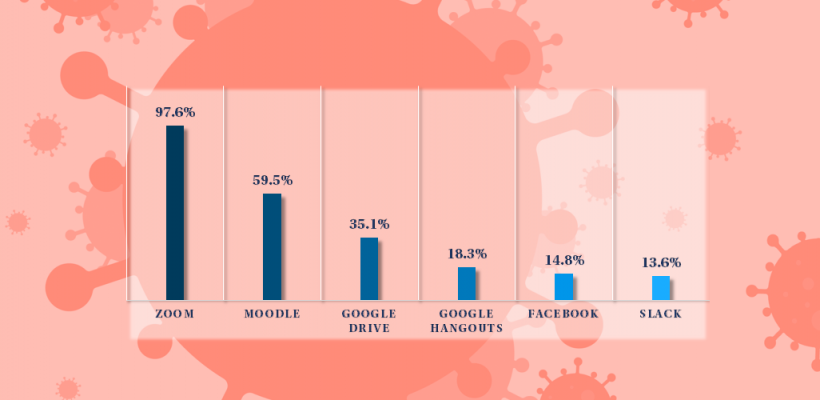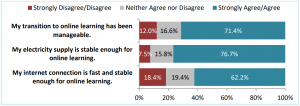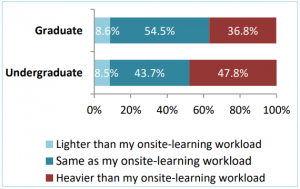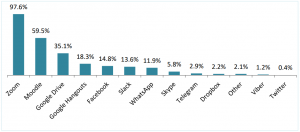
AUA Student Survey: Insight into Temporary Online Learning
3 min readYEREVAN, Armenia ‒ The coronavirus pandemic has greatly affected educational institutions worldwide, forcing them to make a rapid transition from on-campus activities to remote learning. In an effort to support students and faculty of the American University of Armenia (AUA) during this temporary online learning and teaching period, the AUA Office of Institutional Research and Assessment conducted a survey among AUA students at the beginning of April 2020.
The main objective of the survey was to solicit feedback from AUA students regarding their temporary online learning experience in order to provide the University with a better insight into the current state of affairs and identify possible areas of improvement. More than half of AUA’s undergraduate and graduate student body participated in the anonymous survey with a response rate of 56.1%. The results were compiled, analyzed, and reported by Institutional Research Manager Parandzem Sargsyan.
“We hope the findings from this survey will further guide AUA faculty and staff as we work to support students in these challenging times. The findings may also be helpful to other higher education institutions in Armenia and abroad,” noted Sargsyan.
Key Findings of the Student Survey
According to the Temporary Online Learning Survey Report, the majority of the undergraduate and graduate students agreed that the transition to online learning has been manageable. At the same time, although 76.7% of all respondents reported that their electricity supply is stable enough for online learning, 7.5% of undergraduate and graduate students disagreed with this statement. It is interesting to note that, among undergraduate students, seniors reported statistically significantly higher agreement with the above statements than freshman students. As shown in Figure 1, 62.2% of all participants agreed that their internet connection is fast and stable enough for online learning, while 18.4% of students disagreed with the statement. It is important to note that although the survey solicited a relatively high response rate, it is likely that students without stable internet connection were among the 44% that did not respond.
As for the online learning workload (Figure 2), approximately 37% of graduate and 48% of undergraduate students reported that their online learning workload is heavier than their onsite-learning workload.
Among what students liked about their online learning experience, both undergraduate and graduate students mentioned having better time management opportunities and the convenience of learning from home. More than half of the respondents also highlighted the positive impact of not having to spend time and resources on commuting to the University.
“Online learning is more efficient… During our classes instructors record the lecture and post it in Moodle, which gives us the opportunity to review it later. I like this opportunity very much,” commented one of the respondents on the advantages the online learning software offers.
Figure 3 depicts the relative rate at which various software applications are used for online learning across the University in these restrictive times.
Students also shared what they did not like about online learning. The majority of respondents noted the increased levels of stress and potential distraction. One respondent commented that “Online learning requires much more individual work which I cannot do. We have a big family and it is really hard for me to do classes at home. More than that, we have a child at home.”
Other drawbacks of temporary online learning and the current situation were the feelings of loneliness and isolation, as reported by approximately half of the undergraduate and graduate students. Also, there were comments on health-related issues, such as depression resulting from the quarantine, that negatively affected the learning process. Other concerns expressed by the students related to the effectiveness of online learning, uncertainty about grading, previously set deadlines for capstone projects, graduation and the commencement ceremony, and tuition payments.
So far, AUA has made university-wide efforts and has also been addressing students’ concerns on a case by case basis, providing both online counseling and technical services. The findings of this survey will continue to guide AUA faculty and the administration to consider other feasible tools and strategies to support students in these challenging times.
Founded in 1991, the American University of Armenia (AUA) is a private, independent university located in Yerevan, Armenia, affiliated with the University of California, and accredited by the WASC Senior College and University Commission in the United States. AUA provides local and international students with Western-style education through top-quality undergraduate, graduate, and certificate programs, promotes research and innovation, encourages civic engagement and community service, and fosters democratic values.



